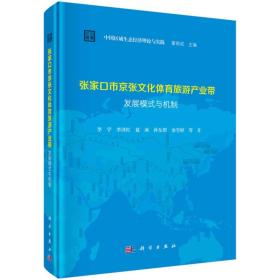
微分方程及其应用(第4版 英文版)
¥ 57.7 6.5折 ¥ 89 九品
仅1件
北京海淀
认证卖家担保交易快速发货售后保障
作者Martin、Braun 著
出版社世界图书出版公司
出版时间2015-07
版次4
装帧平装
货号A10
上书时间2024-11-01
- 在售商品 暂无
- 平均发货时间 15小时
- 好评率 暂无
- 最新上架
商品详情
- 品相描述:九品
图书标准信息
- 作者 Martin、Braun 著
- 出版社 世界图书出版公司
- 出版时间 2015-07
- 版次 4
- ISBN 9787510098864
- 定价 89.00元
- 装帧 平装
- 开本 24开
- 纸张 胶版纸
- 页数 578页
- 字数 480千字
- 正文语种 英语
- 【内容简介】
- 《微分方程及其应用(第4版 英文版)》书写清晰,全面地介绍了微分方程及其应用。《微分方程及其应用(第4版 英文版)》适合于一个或者二个学期的课程,以具有已经学过大学基础微积分的学生为对象。《微分方程及其应用(第4版 英文版)》区别于其他微积分教材的显著特点是,将微积分应用于吸引人的项目或者将其并入到该领域相对新的进展。
- 【作者简介】
- Martin Braun(M.布劳恩,美国)是国际知名学者,在数学界享有盛誉。本书凝聚了作者多年科研和教学成果,适用于科研工作者、高校教师和研究生。
- 【目录】
-
Chapter 1 First-order differential equations
1.1 Introduction
1.2 First-orderlinear differential equations
1.3 The Van Meegeren art forgeries
1.4 Separableequations
1.5 Populationmodels
1.6 The spread of technological innovations
1.7 An atomic waste disposal problem
1.8 The dynamics of tumor growth, nuxing problems, and orthogonal trajectories
1.9 Exact equations, and why we cannot solve very many differential equations
1.10 The existence-uniqueness theorem; Picard iteration
1.11 Finding roots of equations by iteration
1.11.1 Newton's method
1.12 Difference equations, and how to compute the interest due on your student loans
1.13 Numerical approximations; Euler's method
1.13.1 Error analysis for Euler's method
1.14 The three term Taylor series method
1.15 An improved Euler method
1.16 The Runge-Kutta method
1.17 What to do in practice
Chapter 2 Second-order linear differential equations
2.1 Algebraic properties of solutions
2.2 Linear equations with constant coefficients
2.2.1 Complexroots
2.2.2 Equal roots; reduction of order
2.3 The nonhomogeneous equation
2.4 The method of variation of parameters
2.5 The method ofjudicious guessing
2.6 Mecharucalvibrations
2.6.1 The Tacoma Bridge disaster
2.6.2 Electricalnetworks
2.7 A model for the detection of diabetes
2.8 Series solutions
2.8.1 Singular points, Euler equations
2.8.2 Regular singular points, the method of Frobenius
2.8.3 Equal roots, and roots differing by an integer
2.9 The method of Laplace transforms
2.10 Some useful properties of Laplace transforms
2.11 Differential equations with discontinuous right-hand sides
2.12 The Dirac delta function
2.13 The convolution integral
2.14 The method of elimination for systems
2.15 Higher-order equations
Chapter 3 Systems of differential equations
3.1 Algebraic properties of solutions of linear systems
3.2 Vectorspaces
3.3 Dimension of a vector space
3.4 Applications of linear algebra to differential equations
3.5 The theory of determinants
3.6 Solutions of simultaneous linear equations
3.7 Linear transformations
3.8 The eigenvalue-eigenvector method of finding solutions
3.9 Complexroots
3.10 Equalroots
3.11 Fundamental matrix solutions; eAt
3.12 The nonhomogcneous equation; variation of parameters
3.13 Solving systems by Laplace transforms
Chapter 4 Qualitative theory of differential equations
4.1 Introduction
4.2 Stability oflinear systems
4.3 Stability of equilibrium solutions
4.4 Thephase-plane
4.5 Mathematical theories of war
4.5.1 L.F.Richardson's theory of conflict
4.5.2 Lanchester's combat models and the battle of Iwo Jima
4.6 Qualitative properties of orbits
4.7 Phase portraits of linear systems
4.8 Long time behavior of solutions; the Poincare~Bendixson Theorem
4.9 Introduction to bifurcation theory
4.10 Predator-prey problems; or why the percentage of sharks caught in the Mediterranean Sea rose dramatically during World War I
4.11 The principle of competitive exclusion in population biology
4.12 The Threshold Theorem of epidemiology
4.13 A model for the spread of gonorrhea
Chapter 5 Separation of variables and Fourier series
5.1 Two point boundary-value problems
5.2 Introduction to partialdifferentialequations
5.3 The heat equation; separation of variables
5.4 Fourierseries
5.5 Even and odd functions
5.6 Retum to the heat equation
5.7 The wave equation
5.8 Laplace'sequation
Chapter 6 Sturm-Liouville boundary value problems
6.1 Introduction
6.2 Inner product spaces
6.3 Orthogonalbases, Hermitian operators
6.4 Sturm-'Liouvilletheory
Appendix A
Some simple facts concerning functions of several variables
Appendix B
Sequences and series
Appendix C
C Programs
Answers to odd-numbered exercises
Index
点击展开
点击收起
相关推荐
— 没有更多了 —






















以下为对购买帮助不大的评价